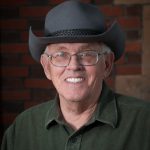
After skipping the December meeting due to
the lack of a host we will be returning to our
regular meeting schedule for the rest of the
2023 – 2024 program year.
Believe it or not, it is already time to start thinking about the 2024 – 2025 program year. First up on planning for next year is the election of officers. Normally the slate of new officer candidates would be read at the March meeting and voted on during the April meeting. Since our annual mini-con meeting is always held in April we need to move that process up, read the slate during the February meeting and vote at the March meeting. Therefore, I am issuing a call for volunteers at this time to run for the positions of:
- Superintendent (president)
- Clerk (secretary)
- Paymaster (treasurer)
These are the only elected positions in the division. There are numerous other unofficial positions who voluntarily serve at the pleasure of the Superintendent.
Not listed is the position of Assistant Superintendent. I would like to re-establish this position as both a back-up for the Superintendent and to serve as a membership coordinator.
If you would like to run for an elected position or be considered for one of the volunteer positions, please let me know southmountaindiv@gmail.com before the February meeting.
Remember – this is your division, and your help is needed to make it work.

 WHAT: POTOMAC DIVISION IN-PERSON TECHNICAL CLINIC
WHAT: POTOMAC DIVISION IN-PERSON TECHNICAL CLINIC